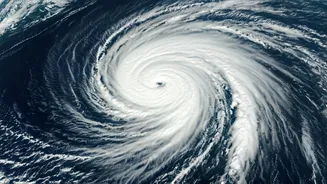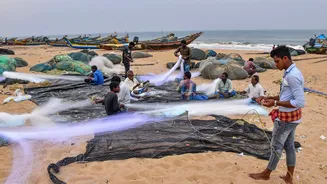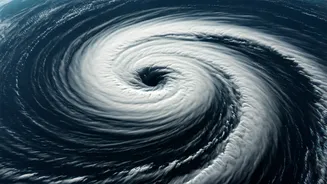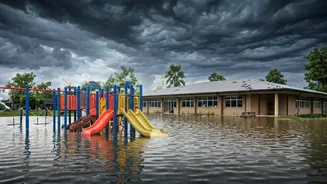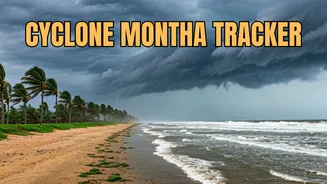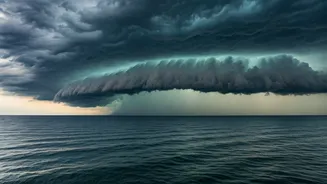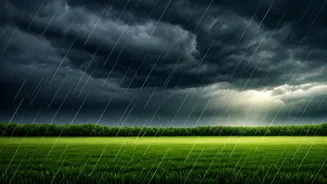Storm Genesis
Tropical storms, like the anticipated Cyclone Montha, originate from disturbances over warm ocean waters. These waters, typically with temperatures exceeding
26.5 degrees Celsius, provide the necessary energy for the storms to develop. As warm, moist air rises from the ocean's surface, it creates an area of low pressure. This leads to more air rushing in to replace it, picking up moisture and heat from the ocean. This continuous cycle results in the formation of thunderstorms that, over time, coalesce and organize. The rotation of the Earth, known as the Coriolis effect, plays a crucial role, influencing the storms to spin, creating a cyclonic motion. As the storm intensifies, with sustained wind speeds increasing, it is classified as a tropical storm or, if winds reach a certain threshold, a cyclone or hurricane, depending on its location.
Naming Conventions
Once a tropical storm reaches a certain wind speed, it is given a name. These names are pre-determined and follow a rotating list, managed by regional meteorological organizations. The World Meteorological Organization (WMO) maintains these lists for each ocean basin. The lists usually contain names of both male and female genders, and the names are often familiar to the region’s culture. The goal is to provide simple and memorable names that are easily communicated, avoiding confusion and streamlining warnings. These names are reused every few years unless a storm causes significant devastation, then the name is retired and replaced with a new one to avoid any insensitivity.
Montha's Significance
The prediction of Cyclone Montha's approach highlights the importance of understanding tropical storms. These storms can cause extensive damage, including heavy rainfall, flooding, and strong winds. The anticipation of Cyclone Montha’s impact leads to precautions, such as the evacuation of vulnerable populations and the preparation of emergency services. By understanding how such storms arise and how they are named, the public is better equipped to interpret warnings and act accordingly. This knowledge emphasizes the vital role of weather forecasting and the importance of preparedness in regions prone to these kinds of events.
Regional Impact
The expected impact of Cyclone Montha includes potential damage to Andhra Pradesh’s coastal areas. Coastal districts are often more vulnerable, making it necessary to relocate senior citizens and pregnant women. The regional authorities are likely to coordinate rescue and relief efforts to mitigate possible damage and protect communities. Understanding these risks and the ongoing weather updates helps residents take the necessary steps to stay safe. It emphasizes the need for constant monitoring, providing up-to-date information, and prompt responsiveness from the regional disaster management teams to protect people and property.




